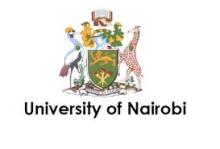Resource information
Land is a critical resource in Kenya, having economic, social, political,
environmental and cultural significance. Kenya’s population continues to rely
on land for both subsistence and economic activities. In fact, the increase
of the population from about 20 million people in the 1960s to about 40
million currently, has put enormous pressure on land. Only a third of Kenya’s
land is arable while the rest is arid and semi-arid. With most Kenyans still
living off the land, contestations over access to, control over and ownership
of land are prevalent. In the broader Kenya context, the land question has
emerged as a major political issue that can erupt anytime and threaten the
existence of the state, as was witnessed in the post-election violence in
December 2007 (Kameri-Mbote and Kindiki, 2009).
Within this context, women’s rights to land have remained at the core of
the quest for gender equality in Kenya. Among various Kenyan communities,
women do not traditionally own land or other immovable property. They have
use rights which are anchored in their relationships with men as husbands,
fathers, brothers or uncles. Such access is tenuous and can be denied by the
male benefactors. This situation affects the survival and livelihoods of women
and also stifles their effective role in, and contribution to, national development.
This is despite the fact that women provide the bulk of agricultural labour.


